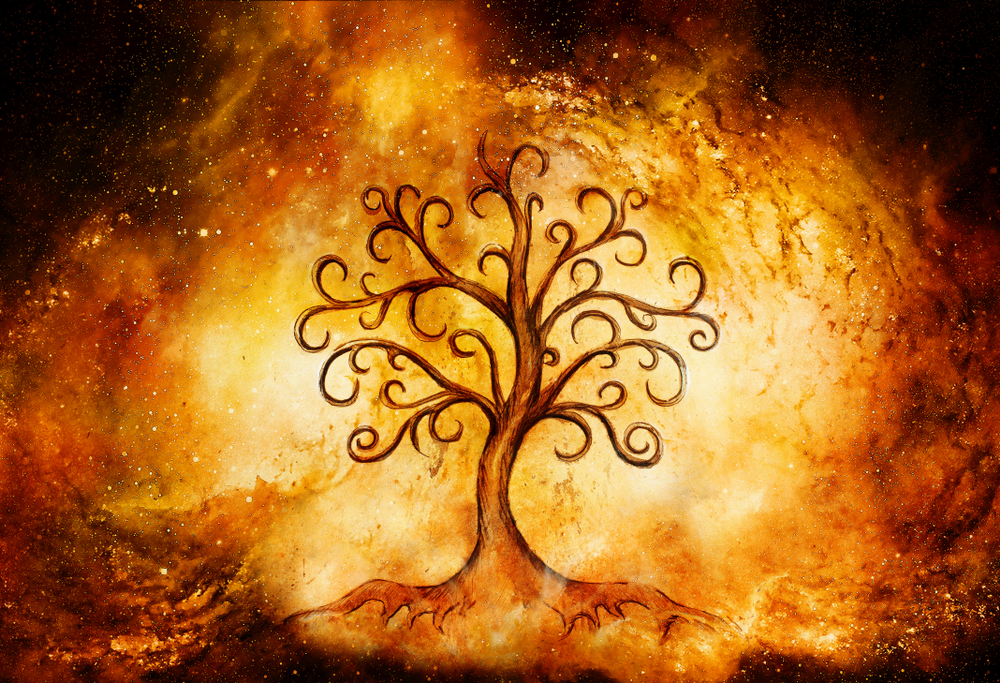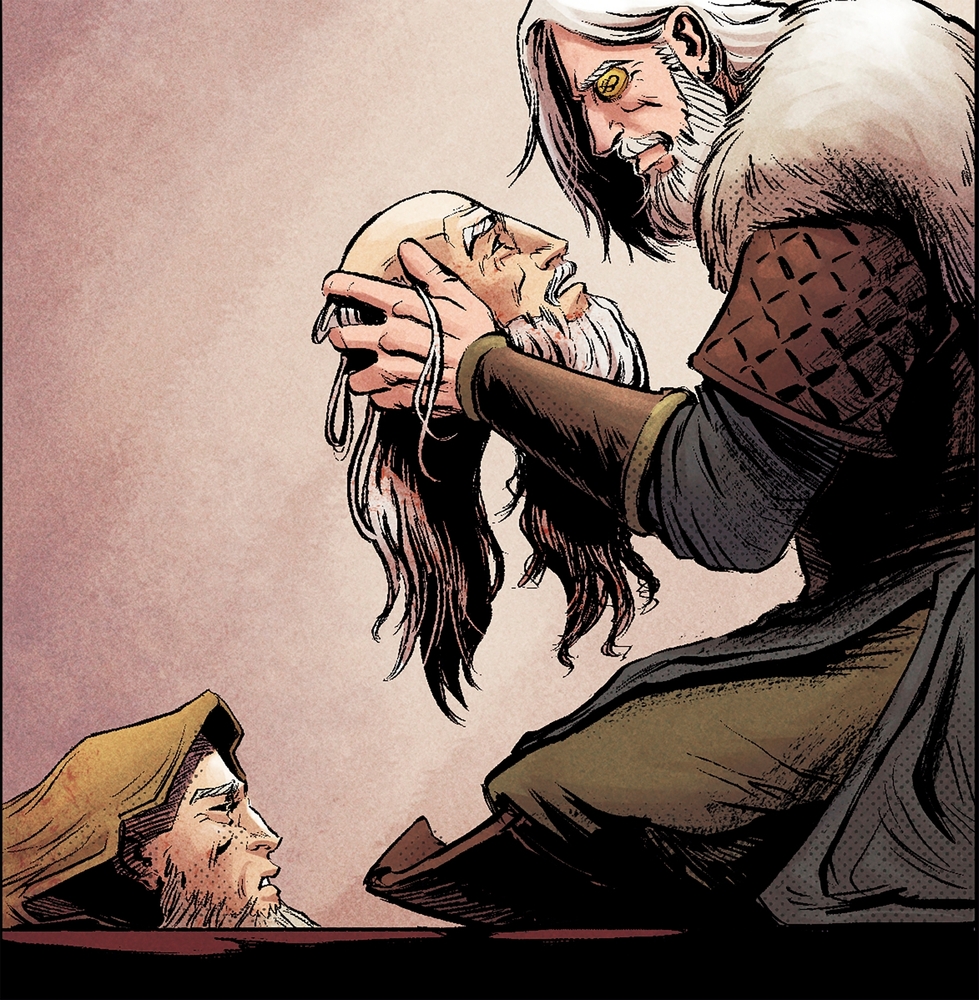Many texts assert that among the Æsir gods, none is wiser than Mimir. While more recent interpretations (mainly the God of War franchise, which envisioned him as a condemned spirit who was stuck in a tree) have changed much about his story, Mimir’s narrative in Norse mythology is one of the most tragic and poignant. He is arguably best known as the literal ‘talking head’ of the Norse lore, but there is a lot more to his character. Before his decapitation, he lived a fascinating life!

Jump to:
Mimir was a figure known for his knowledge and wisdom. His role in Norse mythology showcases the themes of making a sacrifice to gain wisdom and the all-important value of knowledge. Even after his death, his association with the Well of Wisdom and his continued guidance to Odin further illustrate the Norse belief in the power and importance of wisdom and foresight.
Who Is Mimir?
Mimir, or Mim as he is sometimes known, is a popular figure in Norse mythology, known for his unrivalled wisdom and knowledge. He is the guardian of the Well of Wisdom, named Mimisbrunnr, which is located beneath the world tree Yggdrasil. The well contained the water of wisdom, and drinking from it granted immense knowledge. Mimir drank from this water on numerous occasions, and this was one of the many factors that resulted in him becoming one of the wisest beings in the cosmos.
Mimir played a role in some of Norse mythology's greatest events. His most significant role was in the war between the Æsir and Vanir gods. In an attempt to establish peace with the Vanir gods, the Æsir gods sent Mimir and Hoenir as hostages. Hoenir was not nearly as wise as Mimir and would largely repeat everything that Mimir had already advised. This led the Vanir gods to feel cheated by the quality of the hostages they were offered. Eventually, both Mimir and Hoenir were beheaded. Their heads were then returned to the Æsir gods as a warning and a sign of their discontent.
The AllFather, Odin, decided that Mimir was too valuable to lose, so he decided to preserve Mimir’s head with magic and herbs. This enabled it to speak and continue to provide advice and counsel to the Æsir gods. This is how Mimir assumed his most prominent role as personal advisor to Odin and the main source of secrets and knowledge for the Æsir gods.
What Was Mimir the God Of?
Surprisingly, one of the most commonly asked questions is whether Mimir was a god at all! And if he was, what was he the god of? While Mimir is not regarded as a god in the traditional sense (because he does not preside over particular aspects of life, such as thunder or war), he is still classified as a god. Furthermore, he is a Æsir god whose official title is that of the Norse god of wisdom.
Want to put your knowledge of the Norse pantheon to the test?
Centre of Excellence has you covered.
Visit our Norse Gods and Goddesses Hub to sample the first 2 modules of our £127 Norse Mythology Diploma Course for FREE
Where is Mimir From?
While it is also difficult to advise exactly where a god comes from, it is believed that Mimir lived in his well, Mimisbrunnr. Mimisbrunnr is located in Jotunheim, the dwelling place of the Jotuns (or giants, as they are commonly called). This has led some to believe that he is actually a sea giant, although this has never been confirmed.
Why Did Mimir Want Odin's Eye?
One of Odin’s most distinguishable features is the eye patch that covers his missing eye, but it’s not widely known that Odin is missing this eye because of Mimir. Odin wanted to gain the divine knowledge of Mimir’s well, but Mimir advised that he must make a sacrifice to drink from it. Odin therefore plucked out his eye (either his left or right; we don’t know for certain) and offered it to Mimir. In many myths, Odin’s eye remains in Mimir's well after his sacrifice.

Was He Good or Bad?
It is not hard to imagine that, after hearing of Mimir forcing Odin to remove his eye, many of us wonder whether he was a bad or good god. In Norse mythology, Mimir isn't clearly classified as good or bad. Rather, he's known for his wisdom and knowledge. Characters in Norse mythology often embody complex traits and cannot easily be categorised into binary “good” or “evil" archetypes. Even after his death, in the role of a decapitated head offering counsel to the Æsir gods, he was never painted as a predominantly good or evil figure.
Learn More About Norse Mythology from the Centre of Excellence
If you would like to learn more about Mimir and the other Norse deities, such as Odin, Thor, and Freya, be sure to visit our Norse Gods and Goddesses hub. Here, you can access the first two modules of our fantastic Norse mythology diploma course absolutely FREE of charge.
Want to put your knowledge of the Norse pantheon to the test?
Centre of Excellence has you covered.
Visit our Norse Gods and Goddesses Hub to sample the first 2 modules of our £127 Norse Mythology Diploma Course for FREE





